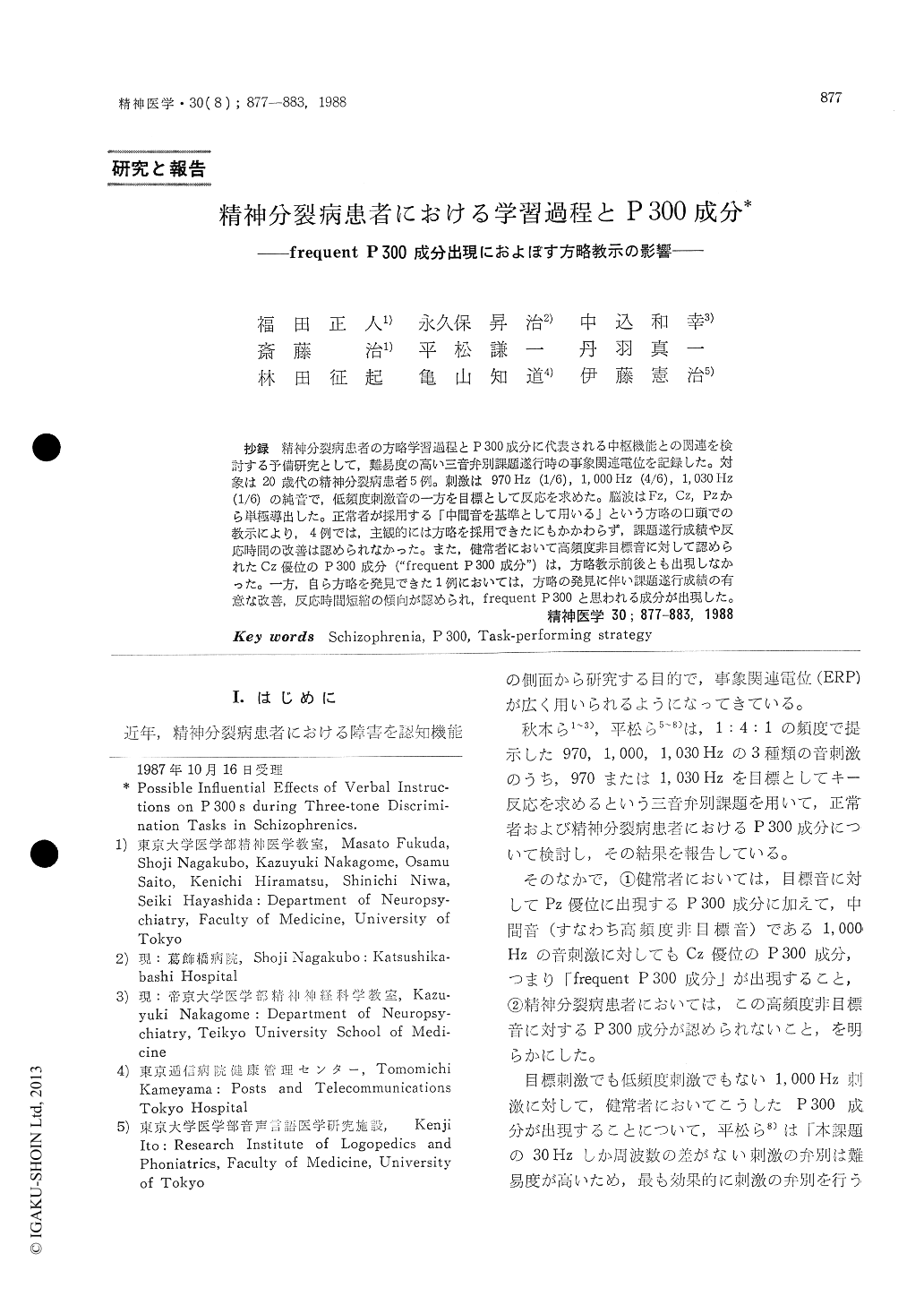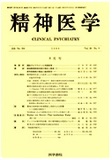Japanese
English
- 有料閲覧
- Abstract 文献概要
- 1ページ目 Look Inside
抄録 精神分裂病患者の方略学習過程とP300成分に代表される中枢機能との関連を検討する予備研究として,難易度の高い三音弁別課題遂行時の事象関連電位を記録した。対象は20歳代の精神分裂病患者5例。刺激は970Hz(1/6),1,000Hz(4/6),1,030Hz(1/6)の純音で,低頻度刺激音の一方を目標として反応を求めた。脳波はFz,Cz,Pzから単極導出した。正常者が採用する「中間音を基準として用いる」という方略の口頭での教示により,4例では,主観的には方略を採用できたにもかかわらず,課題遂行成績や反応時間の改善は認められなかった。また,健常者において高頻度非目標音に対して認められたCz優位のP300成分("frequent P 300成分")は,方略教示前後とも出現しなかった。一方,自ら方略を発見できた1例においては,方略の発見に伴い課題遂行成績の有意な改善,反応時間短縮の傾向が認められ,frequent P 300と思われる成分が出現した。
Event-Related Potentials (ERPs) were recorded from 5 schizophrenic patients during a threetone discrimination task. A series of tone bursts including tones at 970 Hz (a priori probability, 1/6), 1,000 Hz (4/6), 1,030 Hz (1/6) in a random sequence was employed as stimuli, with either 970 Hz or 1,030 Hz tone being assigned as the target. Subjects were requested to press a lever upon detection of targets. ERPs were derived from the Fz, Cz and Pz regions referred to linked earlobes. Experiments included six sessions for each subject. During the interval between the fourth and the fifth session, a verbal instruction was given to employ the frequent 1,000 Hz tones as standard stimuli for improving the performance of the task. In normal subjects, this strategy seemed effective for better performance level. However, four out of five schizophrenic subjects showed no significant improvement in their task performance levels after the instruction. This failure in improvement of the task performance level was accompanied by the absense of "frequent P 300" which was elcited by frequent non-target tones in normal subjects. The remaining one subject, who became aware of the effective strategy by herself during the second session, showed significant improvement in her task performance, and the "frequent P 300" was elicited by frequent 1,000 Hz tones after her discovery of the strategy.

Copyright © 1988, Igaku-Shoin Ltd. All rights reserved.


